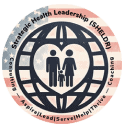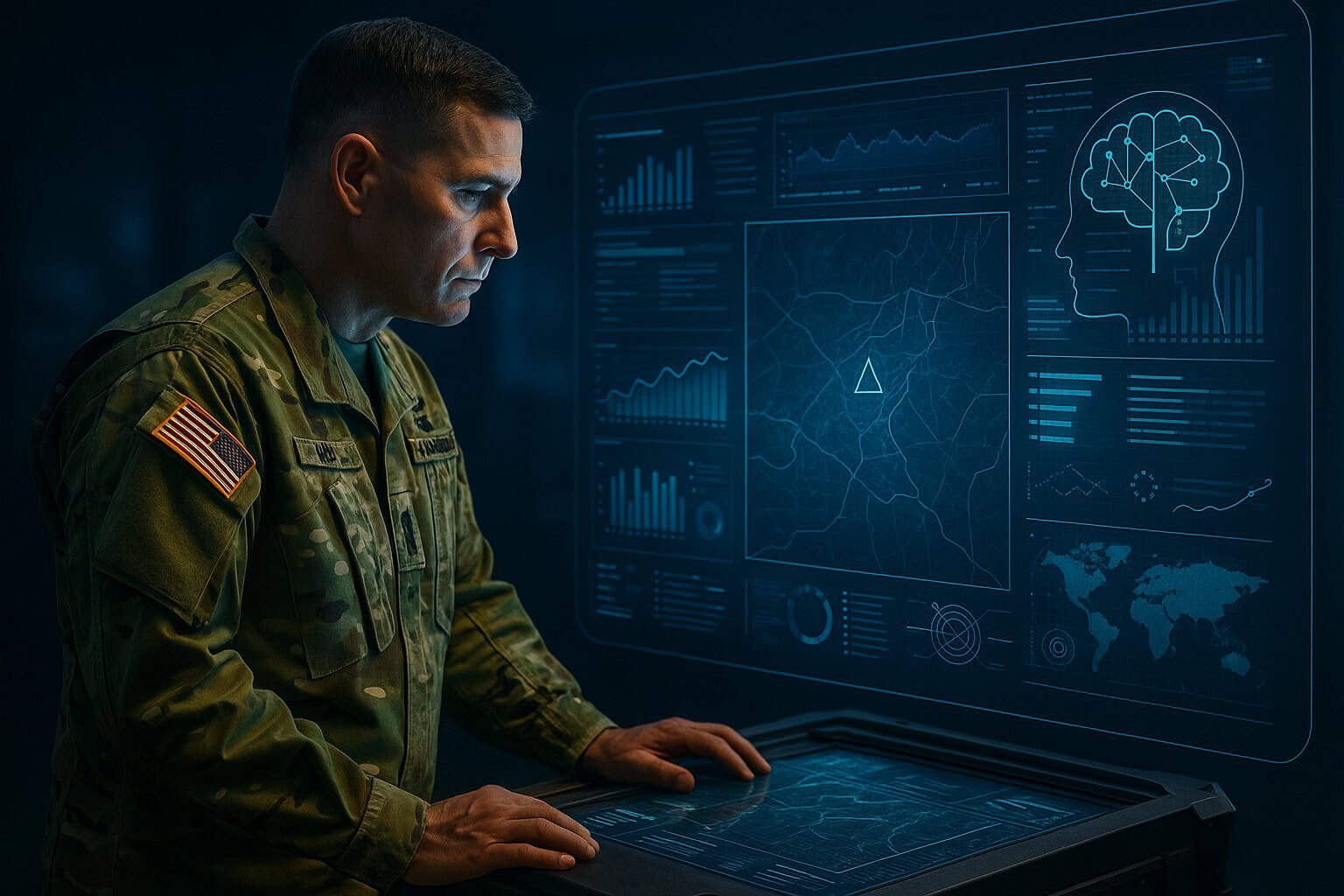What if you could predict who gets sick, months before symptoms ever appear?
Discover how AI is transforming population health through predictive insights, targeted interventions, and more effective, equitable care strategies.
Table of Contents
Executive Summary
AI transforms population health from reactive charts to proactive action. By combining clinical, behavioral, and social data, it predicts health risks well before symptoms appear, enabling outreach before crises occur. AI clusters populations into microsegments, delivering interventions tailored to unique needs and contexts. It links social factors, such as a lack of access to food or housing, to health outcomes, which helps create new community partnerships.
Dashboards and triage systems that work in real-time ensure that care is flexible. Feedback loops look for early signs of impact and continually refine their strategies. Leaders who support ethical and community-aware AI will make things more efficient, fair, and kind on a large scale. Use the links, questions, learning activities, and references to find out more.
Introduction: Unleash AI: Transform How You Lead Population Health
In recent years, the phrase “population health” has evolved from a buzzword to a central strategy as health systems and public health agencies strive to improve outcomes for entire communities. Population health management requires seeing the big picture – trends, risk factors, and gaps in care across diverse groups – and intervening proactively. Conventional methodologies employ retrospective data in conjunction with stroke interventions.
Artificial intelligence (AI) is changing the ways that population health data is gathered, analyzed, and put to use. AI helps find hidden patterns in large datasets, such as clinical, social, and behavioral information. This leads to accurate insights and targeted interventions that can improve the health of the population.
This article examines the significant ways AI is transforming population health, from predicting who is at risk of illness to personalizing prevention strategies and their implications for healthcare leaders committed to value-based, community-centered care.
Nowhere is AI’s promise more immediate—and more powerful—than in its ability to predict health crises before they strike, giving leaders the time and tools to intervene upstream.
Predict Crises Early: Stop Health Risks Cold
A cornerstone of AI in population health is predictive analytics – forecasting adverse events before they occur, allowing for their prevention. Modern machine learning models can process years of EHR data, claims, and even non-traditional data (like air quality or social media signals) to flag emerging risks. For example, researchers have developed AI models predicting hospital admission risk or chronic disease exacerbation months in advance.
One health system utilized AI to predict which patients with chronic obstructive pulmonary disease (COPD) were likely to be hospitalized within six months. The algorithm identified subtle correlations between medication refills, symptom complaints, and even weather patterns that preceded flare-ups. Armed with this foresight, care managers reached out to high-risk patients for breathing workshops and medication adjustments. The result was a significant drop in COPD admissions.
Public health departments, too, leverage AI for early warnings. As mentioned, AI-driven surveillance picked up COVID-19 signals in late 2019. Today, many cities use AI to monitor syndromic data (ER visits, symptom searches) for signs of flu outbreaks or opioid overdose spikes, allowing faster deployment of resources.
But prediction alone isn’t enough—AI also enables leaders to act with surgical precision, tailoring outreach to the right people in the right way at the right time.
Pinpoint Needs: Personalize Care That Truly Saves
Traditionally, population health programs were broad-brush. Everyone in a ZIP code got the same mailer about blood pressure screening. AI is changing that by enabling segmentation at a granular level. Machine learning can cluster populations into meaningful subgroups that human analysts might miss, for example, identifying a cluster of middle-aged men with diabetes and mild depression who are at high risk of medication non-adherence due to certain social factors.
With that insight, a program can be tailored specifically: perhaps a combined diabetes and mental health support intervention, offered via an app if the AI shows that the subgroup tends to miss in-person visits but engages with digital tools.
An illustrative case involves an insurer employing AI to analyze social determinants alongside claims data. These executives must grasp AI strategically rather than developing algorithms or investigating neural network layers. This understanding is needed to integrate AI into mission plans, manage change, analyze outputs, preserve ethics, and adapt continuously. No surprise, preventable ER visits dropped, and patient satisfaction rose among that cohort.
This pinpoint approach – “micro-targeting” interventions to those most likely to benefit – is enabled by AI’s ability to sift individuals’ risk factors and receptivity levels. It makes population health efforts more efficient and effective, much like transitioning from using a wide paint roller to a fine brush on a community canvas.
To truly transform outcomes, however, health systems must look beyond clinical risk—AI can now synthesize social and environmental factors that drive health at scale.
Act Fast: Master AI Feedback to Win Big
It’s widely recognized that social determinants of health (SDOH) – factors such as housing, education, income, and environment – significantly influence outcomes. However, integrating SDOH data with clinical data and making sense of it is a complex process. AI excels at multi-factorial pattern recognition. For instance, an AI model might reveal that in a specific population, a lack of stable housing (as indicated in housing court records) combined with diabetes leads to a five times higher risk of ER visits. Or that single parents in a specific district have high-stress markers correlated with pediatric asthma exacerbations (perhaps due to environmental and socio-economic stress triggers).
These insights enable health leaders to advocate for and allocate resources more holistically, such as partnering with a housing nonprofit to secure units for homeless diabetic patients or providing free childcare support during medical appointments for single parents.
A notable example in this space is a Medicaid plan that employed AI on a rich dataset, including members’ transportation logs, food insecurity surveys, and clinical records. The AI identified a subset of high-cost patients whose primary driver of health costs was uncontrolled diabetes, tightly linked to being in a “food desert.” In response, the plan established a mobile farmer’s market and free produce delivery to that neighborhood – an unconventional but data-driven intervention. Over the next year, both the patients’ A1C levels and ER visits declined.
Still, insight without speed falls short. AI’s real-time capabilities are changing how health systems monitor, prioritize, and respond—hour by hour, not just year over year.
Seize Control: Guide Health in Real Time Now
Another dimension is moving from retrospective analysis to real-time population health management. AI can power live dashboards that alert when population metrics deviate from expected values. For example, a public health agency might have a dashboard (fed by AI analysis) that signals if childhood vaccination rates in a certain community drop below a threshold this month, prompting immediate outreach or the deployment of mobile clinics.
In care management, some organizations use AI triage systems that continuously score and re-score patients in care management programs based on incoming data (new claims, new symptoms logged, etc.). This dynamic prioritization ensures that attention is always focused where it’s needed most at the moment. As one care coordinator described it, it’s like having an intelligent to-do list that reshuffles itself through the day as patient situations evolve.
For instance, Mr. Jones might be priority #10 this morning, but when the AI ingests a note that he called the nurse line with worsening heart failure symptoms, it bumps him to priority #1 by afternoon, telling the care manager to “act now.”
This agility in population health operations – powered by AI’s real-time data analysis – can prevent minor issues from escalating into crises on an ongoing basis, not just during periodic review meetings.
AI doesn’t just power more innovative interventions—it closes the loop. With dynamic feedback systems, programs can now learn, adapt, and improve continuously in near real-time.
Sharpen Results: Let AI Turbocharge Learning Loops
Finally, AI is reshaping not only the intervention side but also how we measure and continuously improve population health outcomes. Traditional public health initiatives often wait a year for survey or claim data to judge impact. AI can shorten that cycle by detecting interim signals of success or failure. Perhaps an AI finds that after 3 months of a new hypertension management program, pharmacy refill data show improved medication adherence in the target group – a good proxy that the program is working, long before hard outcomes, such as stroke rates, improve. On the other hand, if those proxies don’t change, leadership can make a decision sooner.
AI can also improve interventions through reinforcement learning, which means learning from the results of these interventions. An AI might suggest outreach method A (text message) over method B (phone call) for different people to get more people to take the screening. By observing which approach prompts the person to attend a screening, the AI updates its strategy, thereby improving future recommendations.
Over time, the system essentially “learns” the optimal engagement tactics for each micro-segment of the population. This creates a powerful feedback loop, where population health programs become more innovative and more effective the more they’re used – a stark contrast to static programs of the past.
The implications are clear: leaders who embrace these capabilities today will be better equipped to deliver more competent care, reduce disparities, and build healthier communities tomorrow.
Lead Fearlessly: Use AI to Build Healthier Communities
Leaders must harness AI not just to track populations, but to predict, prevent, and personalize interventions at scale. The strategic use of AI transforms population health from a reactive compliance task into a proactive community health engine. Health executives must understand AI’s role in linking clinical trends with social drivers and translating insights into timely action. The goal is to achieve equity and efficiency, delivering the proper care to the right person at the right time. 3 Actions SHELDRs must take now:
- Commission a Population Health AI Pilot: Use AI to identify and engage one high-risk subgroup (e.g., food-insecure diabetics).
- Build a Real-Time SDOH Dashboard: Layer AI insights with ZIP code–level social risk indicators to prioritize outreach.
- Establish an AI + Equity Advisory Group: Ensure interventions based on AI don’t inadvertently reinforce disparities.
Outpace Rivals: Make AI Your Leadership Edge
This article demonstrates how AI is transforming population health into proactive, personalized, and equity-driven care. Predictive algorithms flag patients at risk months ahead. Granular segmentation spots groups ignored by conventional outreach. AI layers social determinants—such as housing instability or food access—onto clinical profiles, triggering community-based support, like mobile produce markets. Live dashboards and triage keep priorities current. Feedback loops measure proxy outcomes early and automatically adapt strategies.
Consider this: What if your next initiative wasn’t a broad campaign, but a targeted outreach powered by real-time data and learning as it runs?
You can begin now: pilot AI for high-risk subgroups, build live SDOH dashboards at the ZIP‑level, and form an AI + Equity Advisory Group to safeguard fairness.
Challenge: Are you ready to link clinical insights with social action in an agile, measurable system?
Consider the discussion questions and learning activities, then check out these articles at the Strategic Health Leadership (SHELDR) website:
Propel Yourself Upward: The New 80/20 Rule Meets ChatGPT as A Strategic Health Leader’s Game-Changer
Deep‑Dive Discussion Questions
- How would you choose the first high-risk subgroup for an AI pilot, and what data would guide that choice?
- What accountability measures are essential to ensure AI-driven SDOH interventions don’t perpetuate bias?
- How should real-time dashboards change your organization’s daily workflows and staff roles?
- How can reinforcement learning adjust outreach methods across different micro-segments?
- What metrics or proxies would you track early on to assess and effectively pivot population health programs?
Professional Development Activities
- AI Pilot Workshop: Design a storyboard and slide deck for an AI scout identifying at-risk diabetic patients.
- Dashboard Sprint: Develop a ZIP-level SDOH heatmap and present it to clinical and community leads for feedback.
- Equity Advisory Role‑Play: Simulate an AI equity council meeting to review algorithm outputs and proposed actions.
Videos
- PMGR: Leveraging Artificial Intelligence in Health and Healthcare. A Preventive Medicine Grand Rounds session where Dr. Peter Elkin examines how AI enhances predictive analytics in health systems, aligning directly with early risk detection strategies.
- AI & Social Determinants of Health: Canadian PerspectivesVictoria Davis from the University of Michigan, part of a large research team from the Upstream Lab at the University of Toronto, summarizes findings on Canadians’ perspectives regarding AI extracting social determinants of health (SDoH) from electronic medical records. This video examines the potential benefits of enhancing care and addressing health equity, while also addressing concerns about data privacy and the human element in healthcare.
- Public Health Prediction by Integrating AI, Data, and Scientific Models in Epidemiology: Epidemiologist Alexander Rodríguez presents real-world examples of blending AI and epidemiological models to forecast outbreaks, aligning with the article’s focus on real-time dashboards and early warning systems.
Hashtags
#AIforPopulationHealth
#PrecisionPublicHealth
#SDOHPoweredAI
#RealTimeHealthInsights
#EthicalAICare




